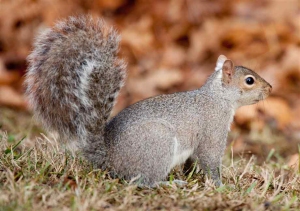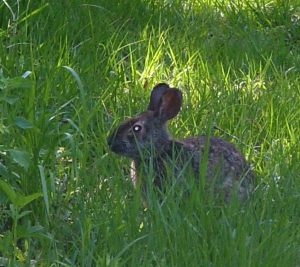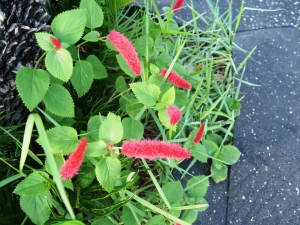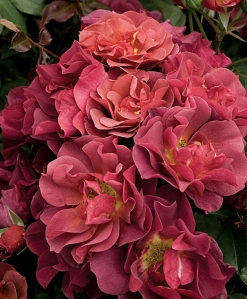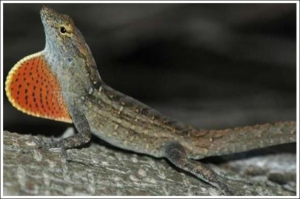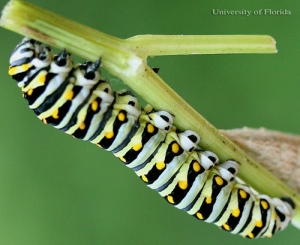A: Eastern Gray Squirrels are the most frequently seen mammal in our area. They are members of the Rodent family, and spend most of their lives in trees. Eastern Gray Squirrels usually live to be about five years old. They survive with their good sense of vision, smell, and hearing. Although squirrels may be amusing to watch (except when they are eating my bird seed); they can indeed damage trees significantly. They typically strip bark during winter and spring but there is no reason to think this could not occur any other time of year. Deciduous trees with smooth bark sustain the most damage, but other trees can be targeted. Remember, deciduous trees are the ones dropping their leaves in the fall. Twig clipping occurs most frequently in spring and early fall. Fortunately, trees can sustain damage up to 50 percent of the trunk’s circumference and foliage losses up to 30 percent without significant impacts. If the squirrels chew more than 50% of a limb it is possible for the limb to die and ultimately break off and fall to the ground. Landowners can prevent damage to trees by installing metal collars. The metal collars can be used to encircle trees and prevent squirrels from traveling up and down the limb. Collars should be at least 2 feet wide and placed 6 to 8 feet above the ground. Collar edges should be overlapped and connected by springs to allow for tree growth. These same types of collars could be placed on the limbs.
Monthly Archives: June 2015
Q: Rabbits are eating my Asiatic jasmine. What can I do?
A: As youngsters, we have learned to love these furry little critters but now as landowners we have a very different perspective. I have a few hints which should help: 1. Removing dense, heavy vegetative cover, brush piles, weed patches, junk dumps and stone piles adjacent to the landscape will help eliminate rabbit habitats. 2. Fencing made from chicken wire, with mesh less than 1″, can be placed around a vegetable garden or herbaceous plant border. The fence must be at least 2′ high with the bottom buried at least 3″ deep. 3. You can also use cylinders of 1/4″ wire hardware cloth extending higher than a rabbit’s reach by placing them around the trunks of individual trees and shrubs. Bury the bottom of the cylinders 2″ to 3″ inches below ground level and place them 1″ to 2″inches from the trunk. 4. There are a few plants rabbits don’t particularly like: yarrow, aster, wild indigo, daylily, geranium, iris and sedum. 5. There are plenty of things on the market which supposedly repel deer and rabbits such as products containing capsaicin, which is the main ingredient in hot chili peppers. But we have no extensive research to support their claims.
Q: What can you tell me about the chenille plant? I am thinking about putting it in my yard.
A: There is a standard variety of Chenille plant, Acalypha hispida, and a dwarf plant, Acalypha pendula. I am going to assume it is the dwarf variety as it is commonly sold in our local garden centers but usually in a hanging basket. Both types of chenille plants will grow only in South Florida year round. What makes this plant so attractive is the long, drooping red colored flowers which are shaped like a tail. It almost looks like red fur. These flowers bloom during the warm weather. The dwarf plant grows to about 6 inches whereas the standard variety can reach heights up to 6 feet. It prefers partial sun to part shade and can tolerate most any type of soil. Keep the soil moist but well-drained. It is slow growing and I believe in Northeast Florida, it would be better suited for a hanging basket rather than putting it in the ground. Most likely it will die back in the winter and probably not return so you need to treat it like an annual. However, you might get lucky and get a season or two out of it but do not be surprised if it does not survive our winters. It really has no serious disease issues but scale, aphids and mites can be potential problems. https://edis.ifas.ufl.edu/fp005
Q: What is a Floribunda rose?
A: Floribunda roses are quite different than the normal hybrid tea roses, climbing and Grandiflora roses. Floribunda roses refer to roses which are larger than miniature but smaller than hybrid tea roses. Floribunda roses are fairly hardy and require less care than the tea hybrids. But remember, we all know the extensive care required by hybrid tea roses. The flowers of the Floribunda may be single or double and they produce more of them than the hybrid tea roses. Flordibunda roses are more shrub form and range from 2 feet to 5 feet tall with a variety of widths. Floribunda roses were developed from a cross between a polyantha rose and a hybrid tea rose. The hope was to find a hardier rose which would be more disease resistant. Floribunda was named by the rose firm Jackson and Perkins as a separate class of roses and introduced in 1939 at the New York World’s Fair. They prefer full sun and well drained soils. Provide them plenty of space to allow for good air circulation. Some examples of Floribunda roses are Sunfire (red), Cherish (pink), Sea Pearl (pink blend), Sun Flare (yellow) and Little Darling (yellow blend) and now there are dozens of newer varieties. The most important thing to remember regarding roses is the root stock as these roses are grafted. Here in northeast Florida we always suggest Fortuniana rootstock. If the rose is not labeled for a rootstock then it may not live long.
Q: I don’t see the small green lizards here anymore. I used to see them all the time when I moved here ten years ago. They seem to have been replaced by a brown variety. What happened?
A: Most likely what you are now seeing is the Cuban brown anole, Anolis sagrei. Apparently this lizard was first detected in 1887 in the Florida Keys but has become fully established within the last 10 years. An increase in the population occurred in the early 1940s as it was detected in many areas of South Florida. It became more fully established in urban areas south of Gainesville by 1980. From there it spread to north Florida and the panhandle then extended to Georgia, Louisiana, and Texas either in landscape container plants and/or by cars and trucks. Larger populations of the brown anole began to be seen along major highways at rest areas, campgrounds and hotels in the mid 1990s. Severe cold winters have from time to time reduced their population but this lizard has able to keep a sustainable number of offspring to continue future generations. They are even able to populate islands as they hitch rides on boats or firewood transferred by boaters or campers. This species thrives in disturbed habitats and ornamental plantings but can potentially inhabit almost any inland or coastal habitat in Florida. It is apparently the most abundant anole over much of the southern half of peninsular Florida, and populations now occur in every county in Florida. It often perches low in trees and shrubs but is quite terrestrial, often escaping by running along the ground. Males reach a length of 20 cm (8 in). The body is brown, and males often have bands of yellowish spots, whereas females and juveniles have a light vertebral stripe with dark, scalloped edges. The hanging fold of skin under the neck is called a dewlap. The edge of the dewlap is white and appears as a stripe on the throat when not distended. The dewlap may vary in color from a bright red-orange to pale yellow. They are prolific hunters, similar to the green anoles. It is regrettable the brown anole could not live well with the green anole but this is a common result when an invasive species is introduced and has no local predators to keep it in check.
Q: What kind of caterpillar is this? It looks similar to a monarch butterfly caterpillar but I know it is not.
A: Thank you for bringing in the caterpillar on a leafy twig so it has something to eat. The caterpillar is the larval stage of the black swallowtail butterfly. The colors on both caterpillars are white, yellow and black. The monarch caterpillar configuration is more striped while the black swallowtail caterpillar has yellow dots. Both produce beautiful adult butterflies which are important pollinators for our area. Because the larval stage of the black swallowtail does devour some of our ornamental flowering plants, it has been labeled as a pest by a few in the horticulture business – but not this horticulturist! Habitats of the black swallowtail are generally open areas, including both uplands and wet areas—wet prairies, fields, flat-woods, pine savannas, roadsides, weedy areas, and gardens. Males perch and patrol open areas for females—often near patches of a host plant. Eggs are laid singly on the host plants—usually on new foliage and occasionally on flowers. Development time varies depending on temperature and host plant species, but generally the egg stage lasts four to nine days, the larval stage 10–30 days, and the pupal stage nine to 18 days (except for overwintering pupae). Pupae are the overwintering stage. There are two generations in northern parts of the range but at least three generations in the South. All swallowtail larvae have eversible horn-like organs behind the head known as osmeteria. The osmeterium of the black swallowtail is bright yellow-orange. When threatened, larvae rear up, extrude the osmeterium, and attempt to smear the potential predator with a chemical repellent. Black swallowtails feed on sweet fennel, dill, Queen Anne’s lace and hemlocks. For more complete information look over this University of Florida/IFAS publication: http://edis.ifas.ufl.edu/in906

